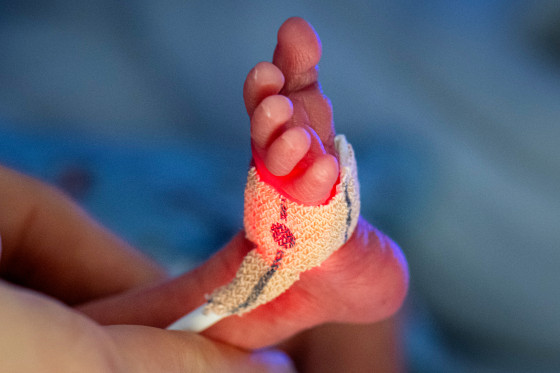
Many pregnant women in the U.S., particularly in the South, face inadequate prenatal care, complicated by
abortion restrictions
, air pollution and
extreme heat
, according to a new
March of Dimes
report. As a result, there have been no improvements in the preterm birth rate in the last 10 years.
In its annual report, released Thursday, the March of Dimes gave the U.S. a dismal D+ grade based on the number of babies born too soon last year. Last year, the preterm birth rate was 10.4%. In 2022, it was 10.5%.
In fact, little has changed in the past decade. In 2013, the preterm birth rate was 9.8%.
“It’s really frustrating,” said Dr. Sarahn Wheeler, a maternal-fetal medicine specialist at Duke University Medical Center in Durham, North Carolina. “I take care of patients who are the real human stories behind the numbers.” Wheeler was not involved with the March of Dimes report.
About 370,000 babies were born at 37 weeks’ gestation or earlier last year, according to the report. Preemies are often at higher risk for physical or intellectual disabilities.
The problem is particularly troublesome in areas of the country
without doctors, nurses, midwives or medical centers
specializing in maternity care. They include states in the South with the most preterm births, according to the report: Alabama, Arkansas, Georgia, Louisiana, Mississippi and South Carolina.
“Inadequate prenatal care has reached its highest level in a decade to an alarming 15.7%,” said Dr. Amanda Williams, interim chief medical officer at the March of Dimes.
External factors
in premature births also play a role, the March of Dimes suggested. More than 40% of pregnant people were exposed to extreme heat, and nearly three-quarters lived in areas with poor air quality, the report found.
“There is an increasing recognition that things like
climate change
” have a significant impact on preterm births, Wheeler said.
Chronic health conditions
among mothers are another significant factor.
Women with diabetes had a preterm birth rate of 28.8%, and it was nearly the same, 23.3%, among women who had high blood pressure.
Experts worry the problem could worsen as pregnant women increasingly go without doctors’ care amid an
exodus of OB-GYNs in states with strict abortion bans
.
“We can’t ignore the data that tells us that there are more hospitals closing, that there are OB/GYNs who are retiring early and fewer medical students going into OB/GYN in states that have the strictest abortion bans,” Williams said.
Taken together, Wheeler said, the research “underscores the need for a real commitment for the research to understand preterm birth as a disease process to offer better therapies and better hope for these families.”
Note: Thank you for visiting our website! We strive to keep you informed with the latest updates based on expected timelines, although please note that we are not affiliated with any official bodies. Our team is committed to ensuring accuracy and transparency in our reporting, verifying all information before publication. We aim to bring you reliable news, and if you have any questions or concerns about our content, feel free to reach out to us via email. We appreciate your trust and support!
